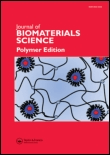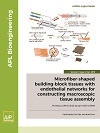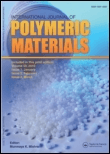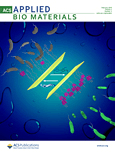
Journal of Functional Biomaterials
Scope & Guideline
Advancing Research in Functional Biomaterials
Introduction
Aims and Scopes
- Biomaterials Development and Characterization:
Research on the synthesis, modification, and characterization of various biomaterials, including polymers, metals, and ceramics, aimed at improving their mechanical, biological, and chemical properties. - Applications in Regenerative Medicine:
Studies that focus on the use of biomaterials in tissue engineering, wound healing, and regenerative medicine, highlighting their role in promoting cellular responses and tissue regeneration. - Nanotechnology in Biomaterials:
Exploration of nanostructured materials and their applications in drug delivery systems, imaging, and diagnostics, emphasizing the nanoscale interactions with biological systems. - Biocompatibility and Bioactivity:
Research aimed at assessing the biocompatibility, bioactivity, and long-term stability of biomaterials in vivo and in vitro, focusing on their interactions with biological tissues. - Antimicrobial Properties:
Studies investigating the antimicrobial effects of biomaterials and their potential to prevent infections in medical devices and implants. - Innovative Manufacturing Techniques:
Research on advanced manufacturing techniques such as 3D printing, electrospinning, and bioprinting for producing biomaterials with tailored properties for specific applications.
Trending and Emerging
- Smart and Responsive Biomaterials:
An increasing focus on the development of smart biomaterials that respond dynamically to environmental stimuli, such as pH, temperature, or specific biological signals. - Sustainable and Green Biomaterials:
A rising trend towards the development of environmentally friendly biomaterials sourced from natural products or designed to be biodegradable, aligning with global sustainability efforts. - Personalized Medicine Applications:
Emerging research on biomaterials tailored for personalized medicine, including patient-specific implants and scaffolds that cater to individual patient needs. - Integration of Artificial Intelligence and Machine Learning:
Growing interest in using AI and machine learning to optimize the design and performance of biomaterials, enhancing their functionality and application efficiency. - Multifunctional Biomaterials:
A trend towards creating multifunctional biomaterials that combine several therapeutic properties, such as antibacterial, osteogenic, and drug delivery capabilities in a single platform.
Declining or Waning
- Traditional Biomaterials without Functionalization:
A decrease in research focused solely on traditional biomaterials, such as plain polymers and metals, without innovative modifications or functionalization techniques. - Conventional Drug Delivery Systems:
Declining interest in studies centered around conventional drug delivery systems, as research shifts towards more advanced and targeted delivery methods using nanotechnology. - Static Biomechanical Studies:
A waning focus on purely static biomechanical studies of biomaterials, with a shift towards dynamic and in vivo assessments that better reflect real-world applications. - Single-Application Biomaterials:
A reduction in research on biomaterials designed for single-use applications, as the trend moves towards multifunctional and reusably designed materials. - Basic Biocompatibility Studies:
A decrease in basic biocompatibility studies that do not incorporate advanced testing methods or long-term in vivo evaluations, as more comprehensive assessments are now preferred.
Similar Journals

Tissue Engineering Part C-Methods
Elevating the Science of Tissue Engineering with Rigorous ResearchTissue Engineering Part C: Methods is a prestigious academic journal published by MARY ANN LIEBERT, INC, specializing in the dynamic and rapidly evolving fields of bioengineering and biomedical engineering. With an ISSN of 1937-3384 and E-ISSN 1937-3392, this journal provides a platform for the dissemination of cutting-edge research from 2008 to 2024, showcasing methodologies that advance the science of tissue engineering. Ranked in the second and third quartiles across several categories in 2023, including a notable Q2 in Biomedical Engineering, the journal is recognized for its contributions to the interface of biology and engineering. Additionally, it holds commendable Scopus ranks that highlight its influence and reach within the scientific community. Although it does not offer open access, the journal remains vital for researchers, professionals, and students seeking insightful articles that bridge the gap between theoretical research and practical application in tissues and regenerative medicine. With its rigorous peer-review process and commitment to quality, Tissue Engineering Part C: Methods continues to be an essential resource for those at the forefront of tissue engineering innovations.

Progress in Biomaterials
Empowering Interdisciplinary Collaboration in BiomaterialsProgress in Biomaterials is a premier journal published by Springer Heidelberg, dedicated to advancing the field of biomaterials through the dissemination of high-quality research articles, reviews, and case studies. The journal, with an ISSN of 2194-0509 and an E-ISSN of 2194-0517, holds an esteemed position within both the Biomaterials and Chemical Engineering fields, as evidenced by its rankings in the Q2 and Q1 quartiles, respectively. With its convergence over the years from 2013 to 2023, it has maintained a strong impact on scientific discourse, ranking #15 in Chemical Engineering and #30 in Biomaterials according to Scopus metrics. The journal is based in Heidelberg, Germany, and aims to provide an open platform for interdisciplinary collaboration amongst researchers, professionals, and students alike, fostering innovation and progress in biomaterials research. As a crucial resource for those engaged in this dynamic field, it empowers authors and readers to explore the latest trends, technologies, and applications in biomaterials development.

Bioengineering & Translational Medicine
Empowering Collaboration in Translational MedicineBioengineering & Translational Medicine, published by WILEY, positions itself at the forefront of innovation in the fields of biomedical engineering, biotechnology, and pharmaceutical science. With an impressive impact factor reflected through its top-tier Q1 rankings in multiple categories, the journal serves as a critical platform for disseminating cutting-edge research and stimulating discourse among professionals and scholars since its establishment as an open-access journal in 2016. Key to its mission is facilitating the translation of bioengineering research into tangible medical applications, thereby enhancing healthcare outcomes. With its comprehensive scope, it attracts a diverse readership, including researchers, industry leaders, and students eager to engage with the latest developments in translational medicine. The journal operates under robust access options, ensuring that research is freely available for maximum reach and impact, fostering collaboration and innovation across disciplines worldwide.

JOURNAL OF BIOMATERIALS SCIENCE-POLYMER EDITION
Innovating healthcare through polymer science.JOURNAL OF BIOMATERIALS SCIENCE-POLYMER EDITION, published by Taylor & Francis Ltd, is a distinguished scholarly journal dedicated to the exploration of biomaterials and their applications in various fields such as bioengineering, biomedical engineering, and biophysics. With an ISSN of 0920-5063 and an E-ISSN of 1568-5624, this journal offers a platform for researchers and professionals to share innovative findings and methodologies that advance the science of polymer-based biomaterials. The journal's impact within the academic community is underscored by its notable Scopus rankings, including a Q2 status in both Biomedical Engineering and Biophysics as of 2023, reflecting its significant contribution to advancing knowledge and practice in these fields. The scope of the journal spans from fundamental research to applications in medical devices and regenerative medicine, ensuring comprehensive coverage of the latest trends and breakthroughs. Although it does not currently offer open access options, the journal remains a pivotal resource for students, researchers, and professionals committed to the development and application of biomaterials in healthcare. For further details, the journal is based in Abingdon, United Kingdom, at 2-4 Park Square, Milton Park, OX14 4RN.

Current Opinion in Biomedical Engineering
Exploring the future of biomedical applications.Current Opinion in Biomedical Engineering is a renowned journal published by Elsevier, focusing on the cutting-edge developments and critical assessments in the fields of biomedical engineering and related disciplines. With an ISSN of 2468-4511, it provides a valuable platform for researchers and professionals to disseminate their insights and discoveries in areas such as bioengineering, biomaterials, and medicine. Its impressive impact factor positions it in the Q2 category for several fields, including Bioengineering and Biomedical Engineering, highlighting its influence and relevance in ongoing scientific dialogues. The journal’s unique format of opinion pieces and reviews encourages innovative thinking and fosters collaboration among experts. As an essential resource for those engaged in the life sciences and engineering, Current Opinion in Biomedical Engineering serves to stimulate discussion, promote knowledge exchange, and drive advancements in biomedical applications. Set in the Netherlands at Radarweg 29, 1043 NX Amsterdam, the journal is accessible through various academic platforms, enabling a global readership to engage with the latest scholarly work in this dynamic field.

JOURNAL OF MATERIALS SCIENCE-MATERIALS IN MEDICINE
Pioneering Discoveries in Biomedical Materials ScienceJOURNAL OF MATERIALS SCIENCE-MATERIALS IN MEDICINE is a leading peer-reviewed journal published by Springer, dedicated to advancing the field of biomedical materials science. With an ISSN of 0957-4530 and E-ISSN 1573-4838, this Open Access journal has been committed to providing researchers and professionals with freely accessible, high-quality research since 2021. It features an extensive scope spanning bioengineering, biomaterials, biomedical engineering, and biophysics, reflecting its significant impact within these interdisciplinary domains. Recognized within the Q2 category of the 2023 rankings in multiple fields, the journal proudly positions itself as a crucial resource for innovative materials that contribute to advancements in medical applications. With impressive Scopus rankings, including 26th in Biophysics and 40th in Materials Science for Biomaterials, researchers, students, and industry professionals alike can rely on this publication for cutting-edge insights that drive the future of medical materials and technologies. Based in Dordrecht, Netherlands, the journal provides a vibrant platform for sharing groundbreaking discoveries and fostering collaborative research among a global audience.

International Journal of Materials Research
Advancing the Frontiers of Materials ScienceInternational Journal of Materials Research is a prestigious academic platform specializing in the dissemination of cutting-edge research in the fields of materials science and condensed matter physics. Published by Walter de Gruyter GmbH, this journal serves as a vital resource for researchers, professionals, and students interested in the innovations shaping the materials landscape today. With an impact factor that reflects its growing influence, this journal offers an array of open access options, allowing for broad dissemination and accessibility of published findings. Spanning research from 1994 to 2024, the journal consistently ranks in the Q3 and Q4 quartiles across key subcategories, including materials chemistry, metals and alloys, and physical and theoretical chemistry. By bridging the gap between theoretical frameworks and practical applications, the International Journal of Materials Research provides an essential forum for advancing knowledge and fostering collaborations within the materials research community.

APL Bioengineering
Advancing Bioengineering for a Healthier TomorrowAPL Bioengineering is a premier open-access journal published by AIP Publishing, dedicated to advancing the field of bioengineering and its interdisciplinary applications. Established in 2017, this journal serves as a vital platform for researchers, professionals, and students interested in the critical intersections of bioengineering, biomaterials, biomedical engineering, and biophysics. With an impressive impact factor and consistent rankings in the Q1 category across multiple domains, including biochemistry and materials science, APL Bioengineering has positioned itself among the top journals in its field. The journal aims to publish innovative original research, comprehensive reviews, and insightful case studies that further the understanding and application of bioengineering principles. Since its inception, APL Bioengineering has fostered a community of thought leaders, providing open access to ensure broad dissemination of knowledge and advancements that underpin the future of biomedical innovation.

International Journal of Polymeric Materials and Polymeric Biomaterials
Advancing Research in Polymeric InnovationsThe International Journal of Polymeric Materials and Polymeric Biomaterials, published by Taylor & Francis AS, stands at the forefront of materials science, showcasing groundbreaking research in the fields of Analytical Chemistry, Chemical Engineering, and Polymeric Materials. With an ISSN of 0091-4037 and an E-ISSN of 1563-535X, this esteemed journal, established in 1971, serves as a vital platform for academics and professionals seeking to disseminate innovative findings and elevate the understanding of polymeric materials. Featuring a commendable impact factor and ranking in the top quartiles of its categories—Q2 in Analytical Chemistry, Chemical Engineering, and Polymers and Plastics—the journal is a pivotal resource for researchers aiming to leverage polymer science in various applications. Although it does not offer open access, its rigorous peer-review process ensures that only high-quality research is published, making it an essential reference for anyone involved in polymer research and development.

ACS Applied Bio Materials
Advancing Knowledge in Biochemistry and Biomedical EngineeringACS Applied Bio Materials is a leading academic journal published by the American Chemical Society, focusing on the innovative intersection of bioengineering and materials science. Since its inception in 2018, the journal has established itself as a pivotal platform for disseminating impactful research within the fields of Biochemistry, Biomaterials, Biomedical Engineering, and Chemistry, often ranked in the top tiers of these categories. With an impressive impact factor, it holds a Q2 ranking in both Biochemistry and Biomaterials, and a prestigious Q1 ranking in Biomedical Engineering and miscellaneous Chemistry, underscoring its significance in advancing knowledge and practices across these disciplines. The journal’s editorial commitment to high-quality, peer-reviewed research ensures relevance and rigor, appealing to a diverse audience of researchers, professionals, and students keen to explore breakthroughs in bio-related materials technology. The access options enhance its visibility and reach, allowing for a broader dissemination of studies that drive innovation and collaboration in biotechnology and material sciences. Located in the heart of Washington, DC, ACS Applied Bio Materials serves as a crucial resource for advancing the future of healthcare, engineering, and materials research.